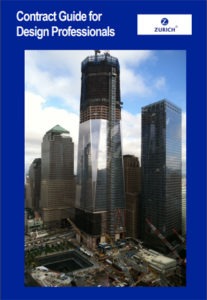Although the 3 year statute of limitations for professional malpractice typically begins to run from the date of completion of the professional services rather than the subsequent date of construction completion, the New York Supreme court found the time for filing suit was extended where integral portions of the contract required the engineer to supply as-built drawings following the construction and to issue a certificate of completion for the contractor after conducting a final inspection and reviewing submitted documents. The court noted the importance of the fact that the parties “deleted from the contract a clause that would have made accrual dates for causes of action contingent on substantial completion of renovation, thus implying that they intended total completion as the measure of the accrual date.” With regard to the significance of the post-substantial completion services by the engineer, the court rejected the engineer’s arguments that those services were merely “ministerial.” Instead, the court was impressed by the fact that the contract required the engineer, prior to signing off on the completion of the project “to inspect the work, review numerous documents and certify that the work was properly completed and documented.” For these reasons, the court found that the time for filing suit had not lapsed, and therefore denied the engineer’s summary judgment motion.
Another interesting aspect of the decision was the court’s rejection of the engineer’s motion for summary judgment based upon its assertion that it had satisfied the standard of care. In support of its motion, the defendant engineering firm submitted an affidavit of an expert who opined that the defendant’s work on the project complied with the State Building Code. The court stated: “The expert did not state, however, that compliance with the Code is equivalent to *1527 performing according to the accepted standard of care in the industry. Relevant professional standards could be equal to, or much higher than, the minimum required under the Code.” But, moreover, said the court:
Even if defendant complied with industry standards, thus rendering it free from professional malpractice, defendant could still be held liable for a breach of contract. Parties are free to enter into a contract requiring performance at a level above that of the industry standard. Plaintiff contends that defendant breached their contract by failing to design the renovations in compliance with the 2000 International Business Code (hereinafter IBC). While defendant argues that such compliance was not required, it listed the IBC under codes and standards in its structural design criteria furnished to plaintiff. Defendant’s technical drawings also referred to the IBC standards for seismic design loads. Defendant therefore failed to establish as a matter of law that it performed in accordance with the accepted standard of care in the industry, that the IBC standards were not part of the contract and, if those standards were contractually applicable, that it adhered to the IBC standards.
Even had defendant met its initial burden, plaintiff raised factual questions through submission of an expert affidavit specifically asserting how defendant’s designs did not comply with the IBC standards or accepted industry standards.
For that reason, the court concluded a question of fact exists such that the case must go to trial to allow the fact finder to make a decision on whether the standard of care was met.
Mary Imogene Bassett Hospital v. Cannon Design, Inc., 923 NYS 2d 751 (2011).
About the author: Article written by J. Kent Holland, Jr., a construction lawyer located in Tysons Corner, Virginia, with a national practice (formerly with Wickwire Gavin, P.C. and now with Construction Risk Counsel, PLLC) representing design professionals, contractors and project owners. He is founder and president of a consulting firm, ConstructionRisk, LLC, providing consulting services to owners, design professionals, contractors and attorneys on construction projects. He is publisher of ConstructionRisk.com Report and may be reached at Kent@ConstructionRisk.com or by calling 703-623-1932. This article is published in ConstructionRisk.com Report, Vol. 14, No.3 (Mar 2012).
Copyright 2012, ConstructionRisk.com, LLC


Connect